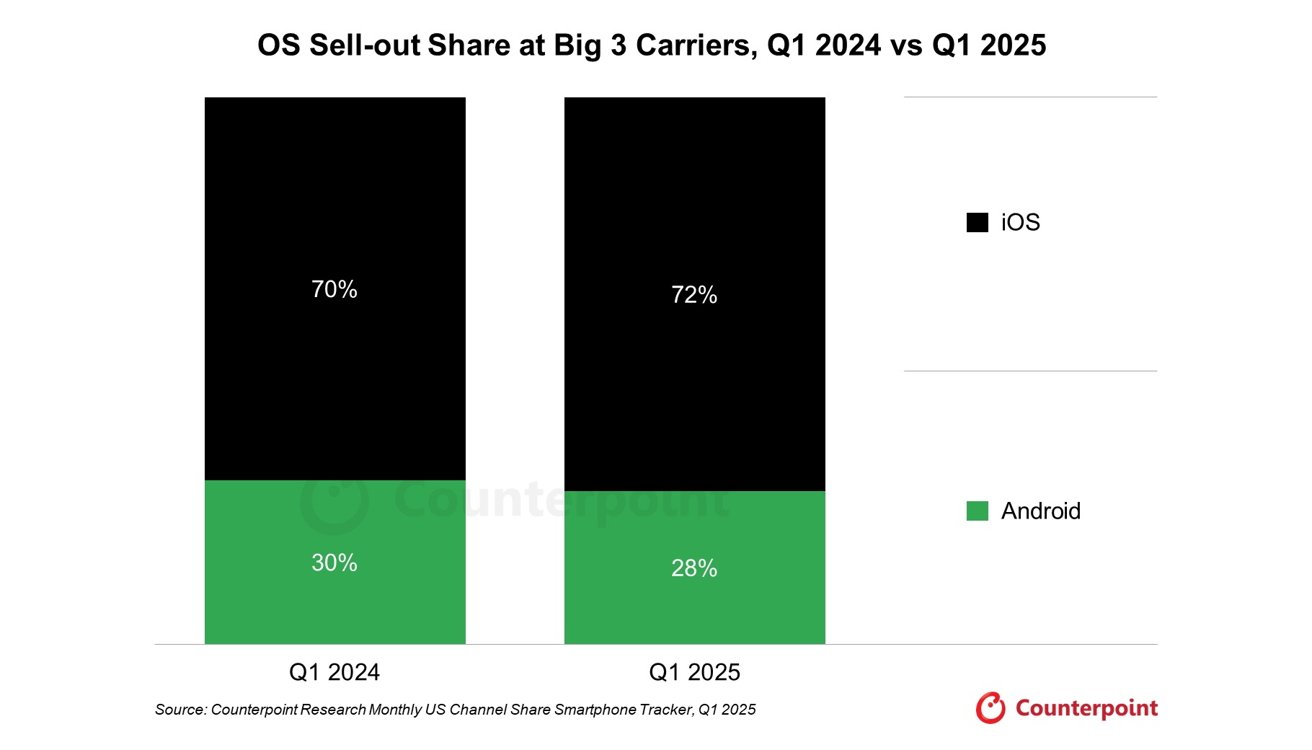Amid slowing phone sales, Apple gained ground at the country’s largest carriers by offering both premium and affordable iPhones.
U.S. smartphone sales fell 2% year-over-year in the first quarter of 2025, according to new data from Counterpoint Research. The drop was driven by weaker demand in the premium segment, where devices priced above $800 saw the sharpest slowdown.
The cooling high-end market reflects broader consumer caution amid inflation concerns and delayed upgrade cycles.
Samsung’s flagship models, particularly the Galaxy S series, were a major factor in the downturn. Apple also saw a slight dip in high-end sales, but growing demand for the iPhone 16e helped offset the decline.
That combination of flagship and value models helped Apple capture a larger portion of smartphone sales at the top three U.S. carriers, rising from 70% in the first quarter of 2024 to 72% in 2025.
Apple’s dominance in the premium tier and its ability to attract mid-range buyers showcase the strength of its ecosystem and brand loyalty. The iPhone 16e provides an affordable entry point to iOS, appealing to budget-conscious consumers and those seeking economic stability.
Carriers also have an effect
To support a softening market, carriers rolled out aggressive promotions. AT&T and Verizon offered the Galaxy S25 Ultra for free with eligible plans, marking the first time Samsung’s Ultra line had been included in such deep incentives.
Smartphone sales at the three major carriers were flat overall. AT&T and T-Mobile saw growth of 5% and 2%, respectively, while Verizon fell 6% due to lower upgrade rates.
Carriers reported a surge in demand in late March and early April as consumers rushed to buy devices ahead of possible price hikes from President Trump’s tariffs. Pricing anxiety may continue to affect short-term demand, especially if trade policy remains uncertain.
Tariffs and inventory strategy shape the outlook
Uncertainty around tariffs continues to cloud the outlook for the rest of 2025. To prepare, original equipment manufacturers, or OEMs, with high production volumes in China — including Apple, Motorola, and TCL — have been stockpiling U.S. inventory.
The strategy may help them avoid midyear price increases when tariffs take effect. Samsung, which manufactures most of its phones outside China, has not taken the same approach.
For Apple, which still assembles most iPhones in China, the current strategy buys time but doesn’t resolve long-term exposure to geopolitical risk.
Apple’s strategy of offering both high-end and lower-cost models seems to be working, especially with the premium segment under pressure and economic uncertainty rising.




